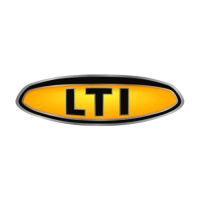Laser Technology, Inc. LTI 20/20 TruSpeed User’s Manual
Page 26
Instrument Confidence Checks
There are several ways to verify the measurement accuracy of a Lidar instrument.
You can verify it directly by measuring the speed of an object traveling at a
known speed, but this is seldom practical. The nature of Lidar is such that it
cannot be tricked by a vibrating object, such as a tuning fork, into displaying a
velocity. For these reasons, LTI has designed the Fixed Distance Test and the
Delta Distance Test. LTI suggests that you do one of these tests each time the
instrument is taken on duty.
Theses tests verify the accuracy of the two key elements of Lidar speed
measurement:
• Precise time measurements
• Ability to make mathematical calculations
When setting up an area for these tests, LTI recommends:
• Permanently installing the test area in a convenient location. The test
area must establish a permanent, known distance between a shooting
mark and a target (Fixed Distance Test) or between a shooting mark and
two targets (Delta Distance Test).
• Using a metal tape to measure the distance; this will ensure that the
measurement is accurate.
Other considerations:
• The shooting mark is where you stand to do the test, and can be an "X"
painted on the pavement.
• A target can be any flat, permanent structure-a sign or wall, for
example-painted with a bull's eye or other aiming point.
• The shooting mark and the target must form a straight line.
• The distance specified is horizontal distance. Horizontal distance is
measured along a straight, level path from the shooting mark to the
center of the aiming point.
• The manner in which you stand and hold the instrument both affect the
test measurements. For exact readings, carefully hold the instrument so
it is directly over the middle of the X.

